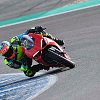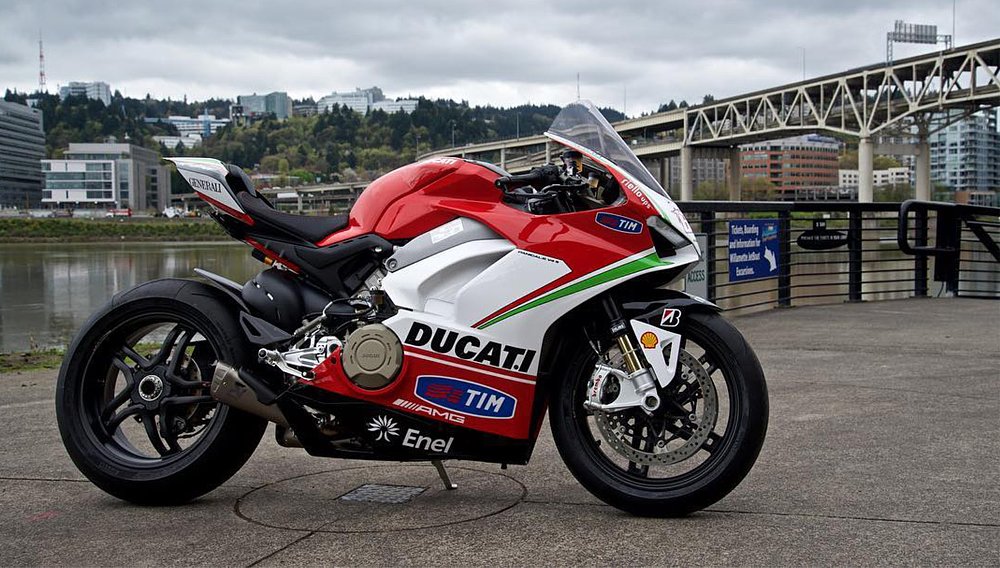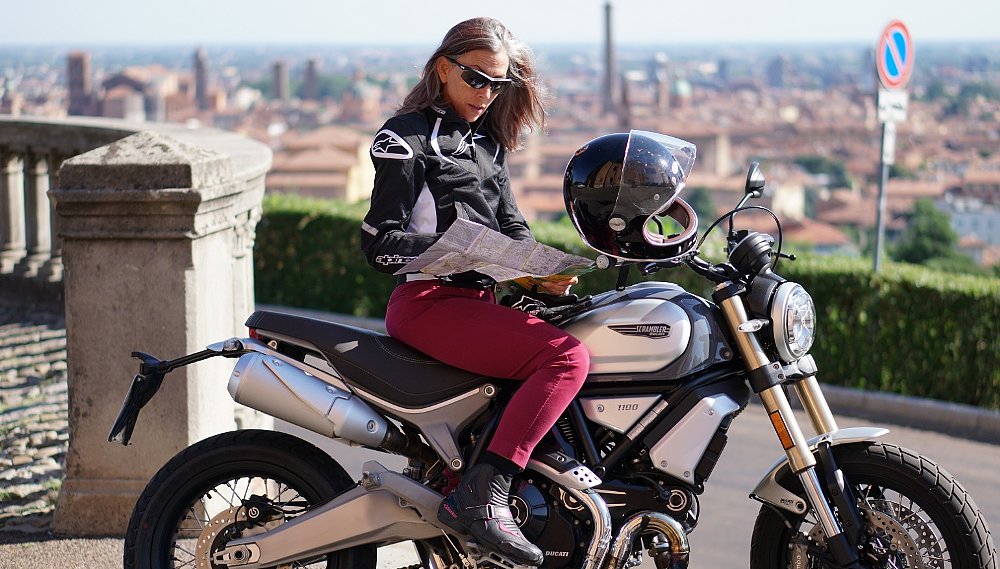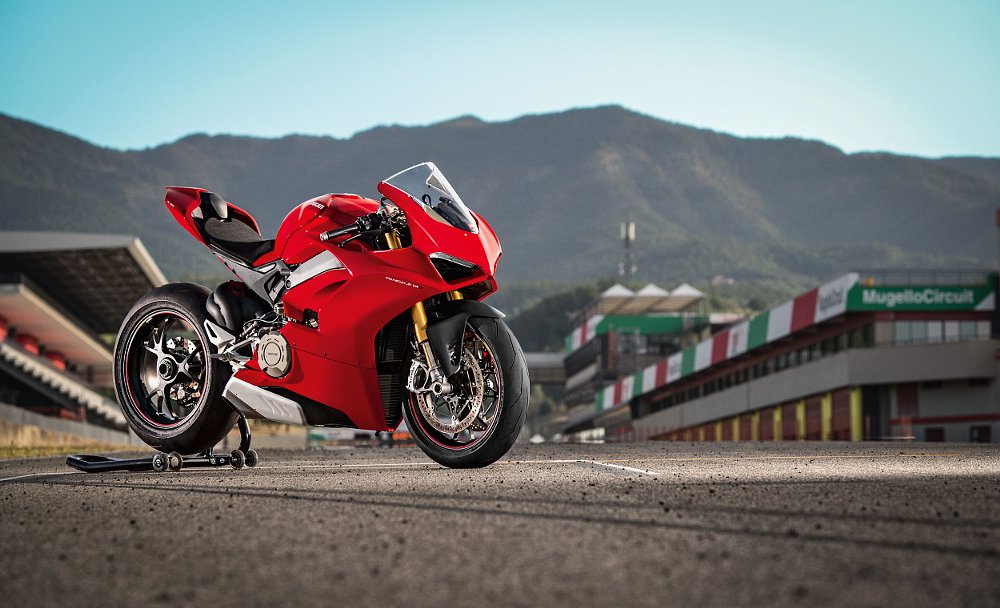Search the internet for famous quotes about power and you will see that it has defined our society’s greatest names. Abraham Lincoln, Mahatma Ghandi, Spider-Man; they each understood at one point that the true test of a person is how they handle the responsibility of power.
In the world of motorcycles, especially sport bikes, the race for the most horsepower rages relentlessly. With the fastest machines in the world pushing to 200 horsepower, and sometimes beyond, it begs the question: What if we took the advice of our heroes and metered ourselves? What if we could have the sophistication of the world’s elite superbikes in a package that only had 150 horsepower? When Ducati unveiled the 2020 Panigale V2, it appeared to be that very bike.
It wasn’t as intentional as all of that, of course, but rather an evolution. Ducati’s middleweight sport bike goes back to the mid-1990s and the famous 748, which was manufactured for nearly a decade before it was succeeded by the 749, 848, 899, and 959 models. After 22 years and more than 200 cc of displacement creep, the 955 cc engine in Ducati’s “middleweight” sport bike had become larger than the original big brother, the 916. With the Bologna brand’s flagship 1,000 cc Panigale superbike now a four-cylinder, there is now room for the smaller sibling to share the name. And so the Panigale V2 was born.
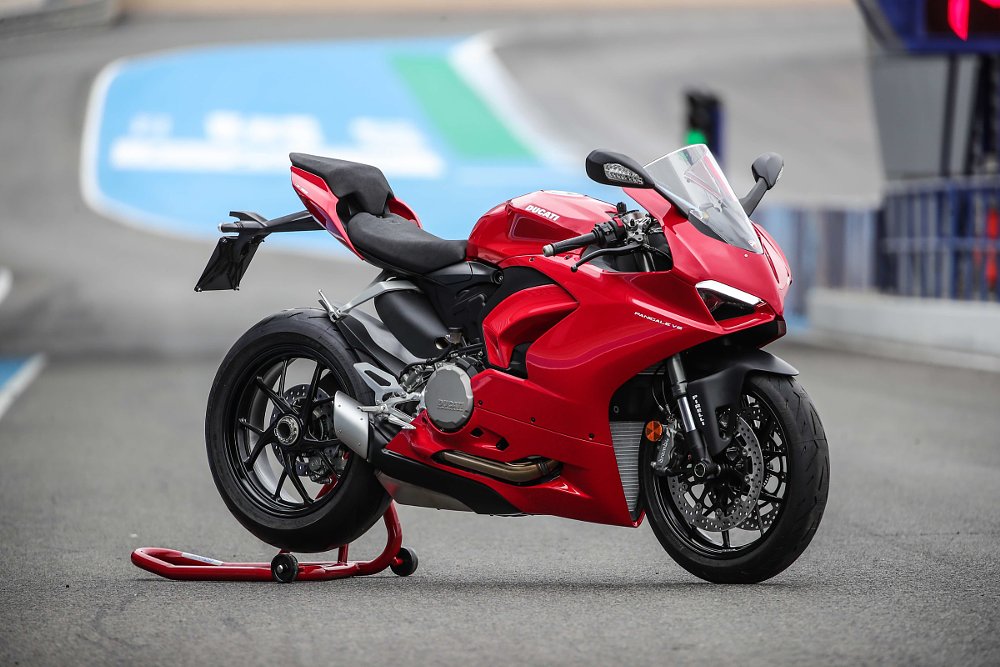
Mechanically, much of the V2 is the same as the outgoing 959. The aluminum monocoque “frame” that reaches from the top of the engine forward to the headstock is the same piece, for example, as is the majority of the trellis rear subframe. Suspension components are identical to the 959, though they are tuned slightly softer. The fuel tank is the same, and many of the engine’s parts have been reused (the displacement remains 955 cc). Broadly, the updates to the 959 platform to create the Panigale V2 focused on squeezing five more horsepower out of the mill (for a claimed total of 155) while rising to Euro-5 emissions standards, evolving the suite of electronic rider aids, and adapting the Panigale V4 aesthetic to the V2.
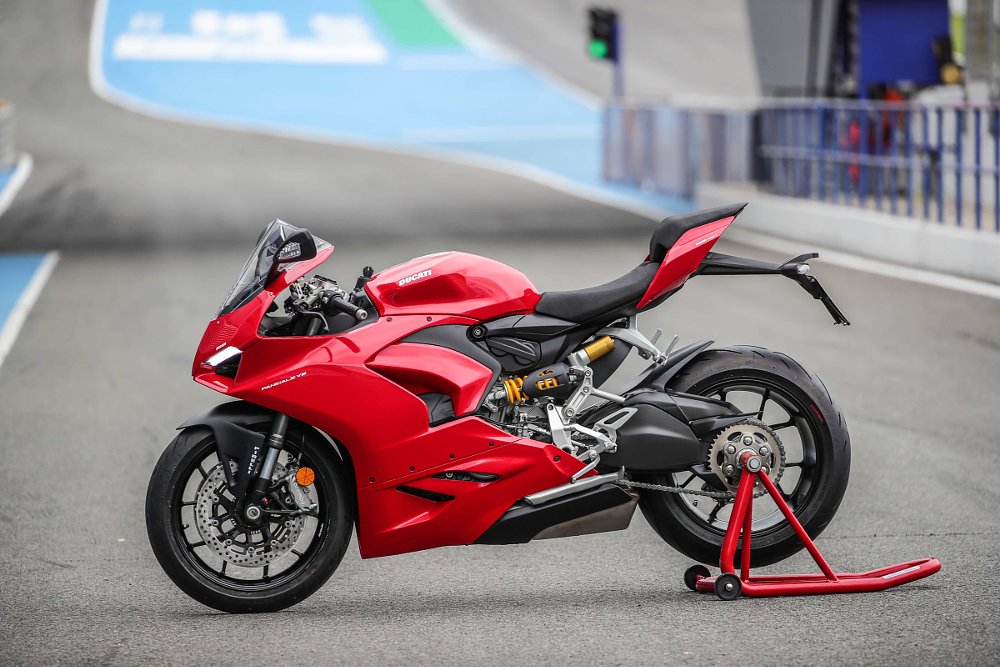
On that topic of looks, the V2 clearly has more Panigale DNA than ever, now with a single-sided swingarm and full-LED lighting. Hopping on the V2 for the first time, the cockpit certainly reminded me of the big Panigale. The handlebars are set wide, and the peak of the windshield rises abruptly from the narrow fairing. At the junction of the seat and the fuel tank, the bike is extremely narrow, thanks in part to the cylinder head of the V2 being noticeably narrower than the V4. The updated saddle is thicker by five millimeters and is rounder at the edges. There’s decent legroom, particularly for a sport bike, which has always been a Panigale trademark despite flagship Ducatis never being comfortable. Predictably, when the engine jumps to life it provides the familiar clatter of a heavily oversquare V-twin.
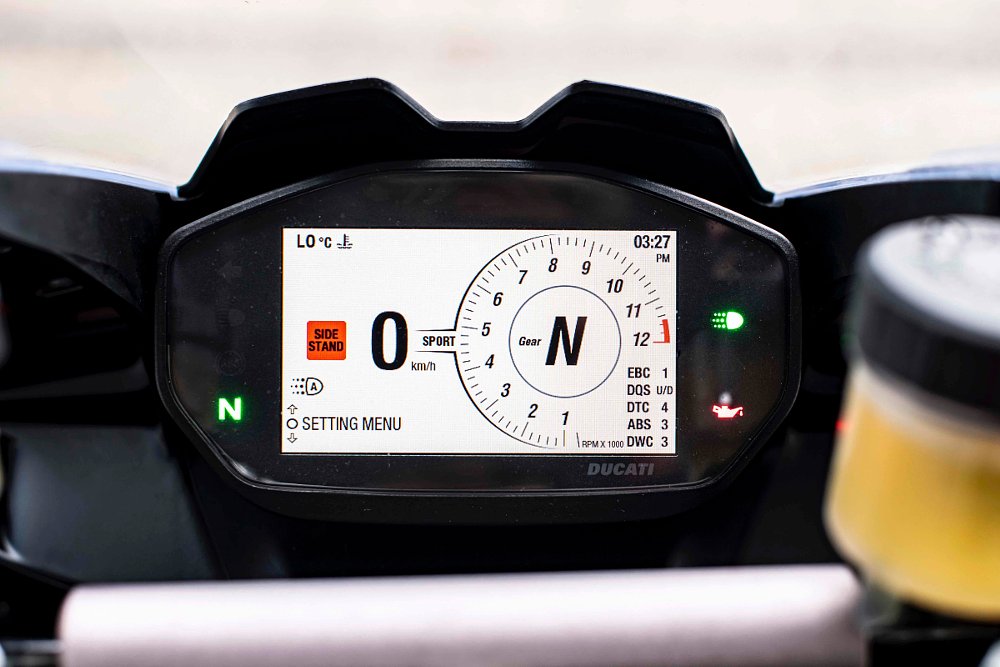
As I got to know the Jerez circuit and the tires came up to temperature, I recognized a few more features. The 4.3-inch TFT display is lifted from the Panigale V4, and the menu structure is similar. The up/down quickshifter is familiar, as is the adjustable wheelie control (four levels) and engine braking (three levels). Before the tires were all the way warm, I smeared the rear Pirelli a little too liberally and the traction-control light illuminated — a gentle reminder that the Panigale V4’s six-axis IMU is also onboard the V2, with updated software that offers lean-angle ABS and makes TC interventions smoother than any Ducati this side of a world-championship race paddock. In fact, the Vehicle Project Manager for the Panigale V2, Stefano Strappazzon, previously worked on Ducati’s MotoGP team; including Casey Stoner’s 2007 Championship machine.
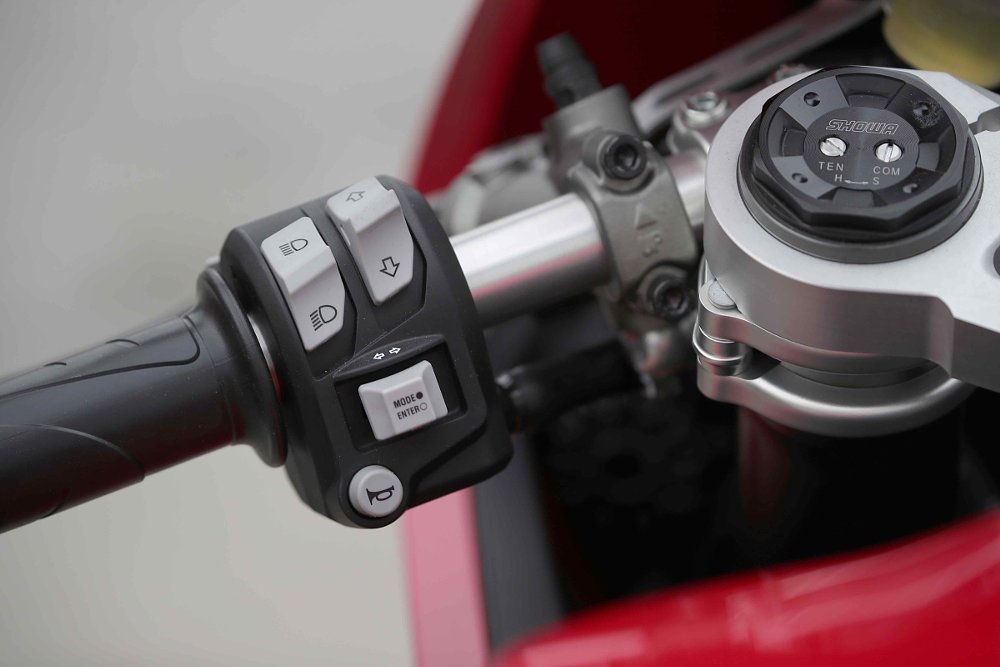
Ducati claims that the Panigale V2 electronics are on par with the 2020 Panigale V4, which at press time nobody has ridden yet, and are derived from knowledge gained during the 2018 MotoGP season. But, as Strappazzon quickly pointed out, building a street bike isn’t just applying lines of sexy, racing R&D code to the ECU. His team spent countless hours working on the muffler, for example, straining to meet the stricter pollutant guidelines of Euro-5 emissions standards while keeping it small enough to fit under the bike. In other words, the Panigale V2 has deeper layers of sophistication than we’ve ever seen in the “middleweight” category — some we can see, and some we cannot. The price is that the bike is heavier than the outgoing 959, by about 10 pounds.
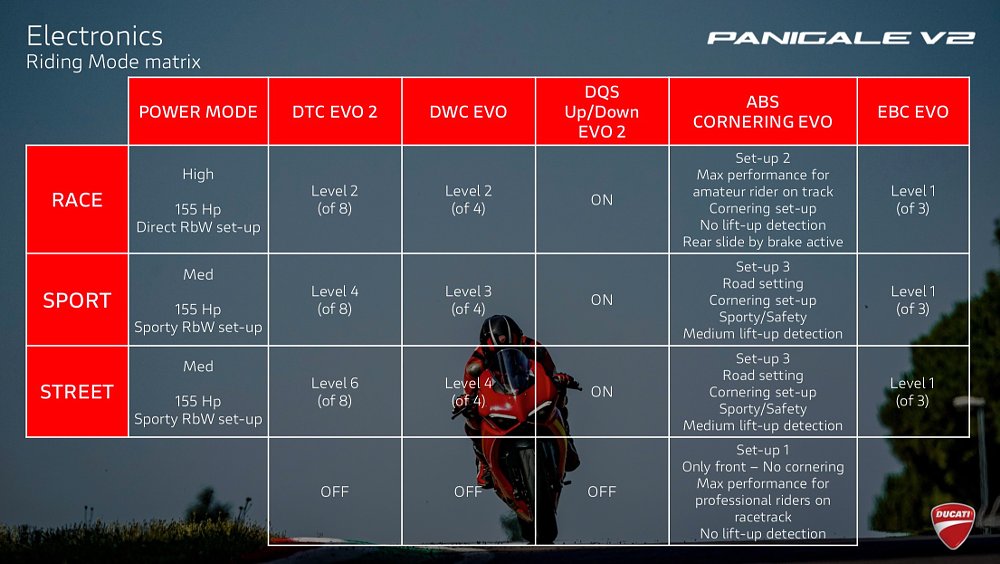
Truth be told, I didn’t notice the added power or the extra weight. The thing that really came through was how planted and calm the bike was in every turn of the Jerez circuit. Stability and precision on the brakes is typical of Ducati sportbikes and the V2 enters corners just like you would expect; tons of braking power from the beefy calipers and 320 mm rotors, with good feel from the fork. Where the V2 delivers surprising confidence is picking up the throttle and powering out of corners. The chassis was never flustered or clamoring for grip, it simply accelerated with a salvo of thunder pouring out of the exhaust until it was time to grab another gear. The fully adjustable Showa fork and Sachs shock are pretty ho-hum by Ducati standards, but I never felt the need to adjust either one.
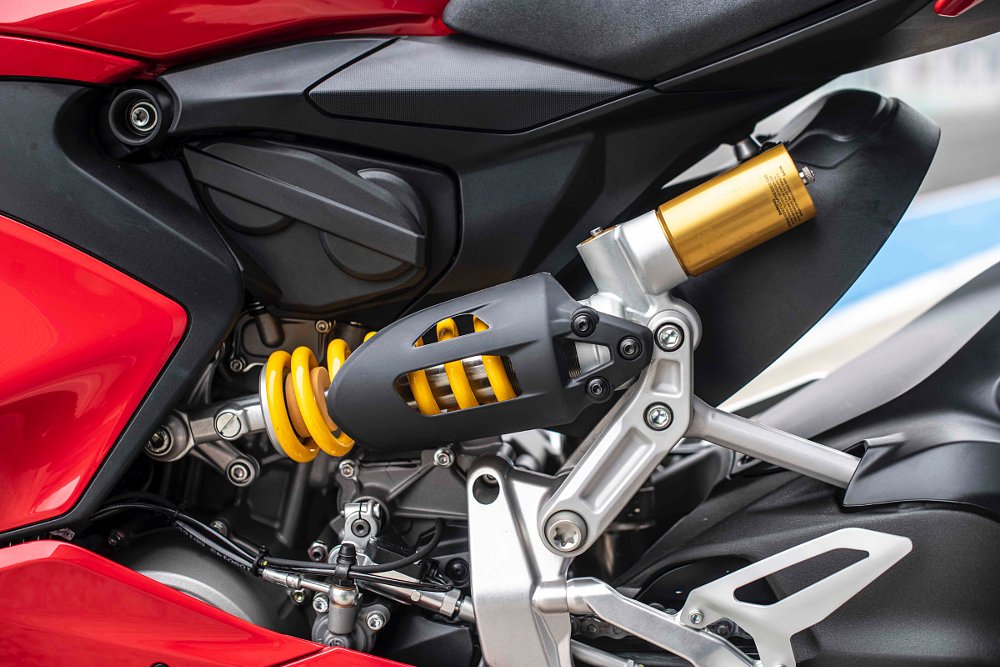
It felt precise and assertive, it was easy to be smooth, and when I accidentally shut off traction control and ABS with a wheelie that went on a little too long it didn’t even matter. I braked as deep as I dared and ran the tires out onto the grippy, MotoGP curbing until the checkered flag pulled me into the pits. At some point it struck me why the Panigale V2 was making me feel like such a hero on the track, in the form of an old racing adage (some of you might be familiar). Essentially, the way to make any vehicle handle worse is to add horsepower. More power makes the brakes feel worse and the chassis flex more. It makes your brain work harder and the tires wear out sooner.
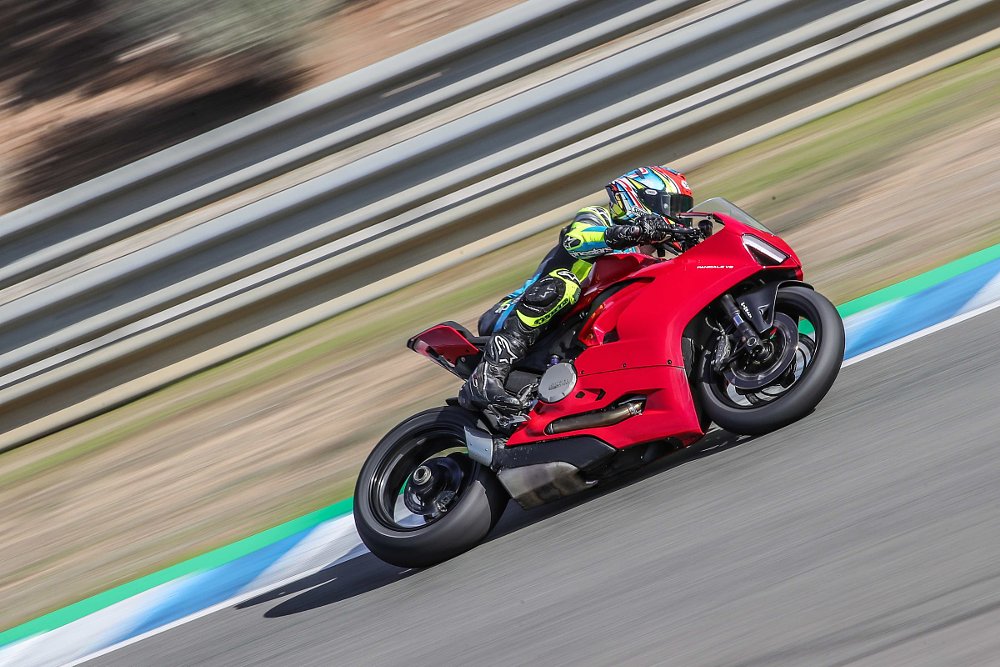
Practically, the Panigale V2 is the opposite. Most of the energy put toward the development of this bike went into refining what already existed. By massaging the suspension, and the power delivery, and riding position, and myriad other small tweaks that separate the V2 from the 959, the new machine has become faster without adding an appreciable amount of power. It has become faster by being easier to use. (It’s also fair to point out that this concept is one of the ways that Ducati made such a big step forward from the 1299 Panigale to the Panigale V4 — unruly power turned into smoother, more predictable thrust, without making the peak horsepower number smaller.)
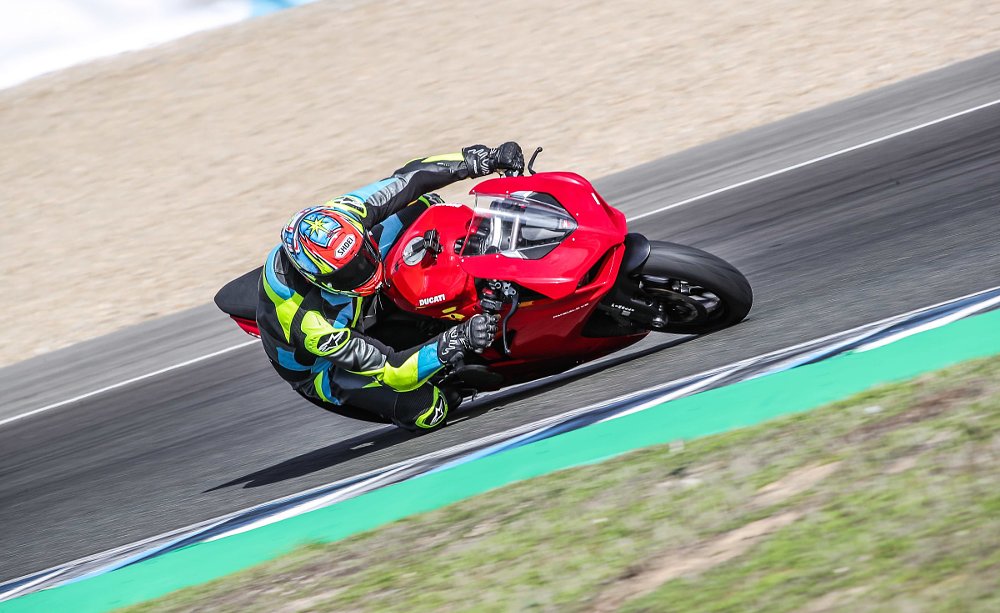
Nothing's perfect, and near-perfect isn't cheap
As impressive as the bike is around a racetrack, I do have some gripes. Experimenting in pit lane with some imaginary stop-and-go traffic, I found the clutch is a little grabby. It’s not unpredictable, but the narrow engagement zone makes it a little unforgiving in a way that Ducati clutches often are. And as excellent as the lean-angle-dependent quickshifter has become, I think there’s still room for improvement. Mostly on upshifts, where the rider needs to learn how and when to kick the lever in order to get the smoothest shifts.
Last of all, the asking price of $16,495 places the Panigale V2 firmly in the strike zone of Japanese literbikes. And that doesn’t bring me to a gripe so much as the age-old question of subjective value.
Is the Panigale V2 worth the same amount of money as any superbike from the Big Four? It’s certainly more advanced than some of them, but is it better? For me, I’m confident I could lap Jerez faster on a Yamaha R1 or a Kawasaki ZX-10R. A CBR-1000 or GSX-R1000? I’m not so sure. A different rider and a different track, the calculus would be completely different. At the end of the day, what people will point to is that the V2 is down many dozens of horsepower to the competition from elsewhere in the world.

All this talk about power, or lack thereof, brought me to a hunch: that this 955 cc, 155-horsepower machine was probably faster than a full-fledged Superbike of 20 years ago, even though it felt slower. I tracked down a gray-haired (and still very fast) colleague in the Jerez paddock, who is lucky enough to have ridden every important bike in the last 30 years. He recalled riding Carl Fogarty’s World Superbike at Mugello in 1999. It was wild and squirrelly even on the straightaways, he said. Although it was nearly 100 pounds lighter, he figured a bike like that was likely slower simply because it was so much harder to ride.

Which brings me back to Lincoln, Ghandi, and Peter Parker. What are we going to do with 200 horsepower that we can’t do with 150? I love powerful superbikes as much as the next gearhead, but might they be better left in the hands of our motorcycling luminaries and heroes? Do we all need the responsibility of ultimate, mind-bending performance?
Chasing the pinnacle of performance will always be important, but I appreciate that the Panigale V2 is less powerful than the world’s fastest bikes without being compromised in any other way.

| 2020 Ducati Panigale V2 | |
|---|---|
| Price (MSRP) | $16,495 |
| Engine | 90-degree, liquid-cooled V-twin, four valves per cylinder |
| Displacement | 955 cc |
| Bore x stroke | 100 mm x 60.8 mm |
| Compression ratio | 12.5:1 |
| Power/torque | 155 horsepower @ 10,750 rpm / 76.7 foot-pounds @ 9,000 rpm |
| Transmission | Six gears, bi-directional quickshifter |
| Front suspension | Fully adjustable 43 mm inverted Showa BPF fork |
| Rear suspension | Fully adjustable Sachs monoshock |
| Front brake | Twin 320 mm discs, Brembo M4.32 four-piston radially mounted monoblock calipers |
| Rear brake | Single 245 mm disc, two-piston Brembo caliper |
| Tires front/rear | 120/70ZR17; 180/55ZR17 |
| Steering head angle/trail | 24 degrees/3.7 inches |
| Wheelbase | 56.5 inches |
| Seat height | 33.1 inches |
| Wet weight | 441 pounds |









